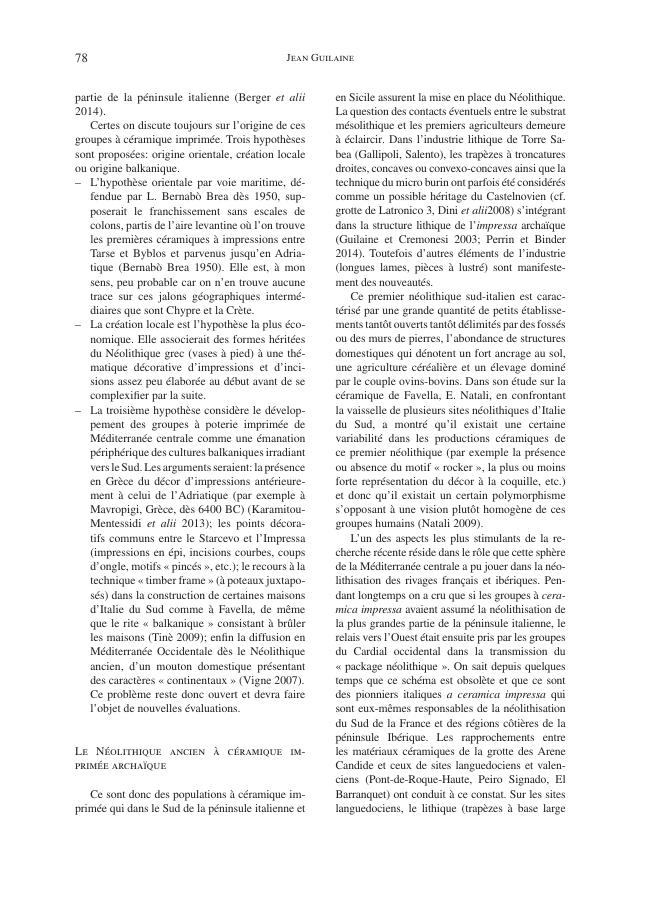Du Levant à l'Espagne : aspects de la néolithisation en Méditerranée
P. 73-82
This synthetic communication examines some of the processes that led to the neolithisation of the Mediterranean. Very early, around 9000 BC during the PPNA, wheat growers and wild pig hunters settled in Cyprus (Klimonas). During the PPNB, around 8500-8000 BC, when the ungulates were fully domesticated, the pre-pottery Neolithic conquered the Anatolian plateau, where a first break in diffusion is observed (arrhythmic model). Thessaly and the southern Aegean were not neolithicised until around 6500 BC, in a stage that already included pottery. However, several earlier contacts, by sea, could have generated neolithisation processes in a non-pottery stage, in Crete (Knossos) or on the coast of Asia Minor (Cukuriçi).
The ancient Greek Neolithic (Monochrome) reached Corfu around 6400-6300 BC. At the Sidari site the baton was taken up by impressed ware groups around 6000 BC, which acted as carriers of the Neolithic ‘package' into the Adriatic and southern Italy. An original facies of the Impressa, known above all in the Arene Candide cave, brought about the neolithisation of the entire north-western arch from the Tyrrhenian Sea to Valencia through the spread of small coastal sites. The Franco-Iberian Cardial, currently considered to be posterior to this first wave of pioneers, later consolidated the neolithisation acquisitions from Provence to Portugal. Its genesis will be the subject of a new hypothesis. Except in Morocco, where a particular Cardial facies developed, the diffusion on the southern coast of the Mediterranean continues to be little known and awaits more in-depth research. [Publisher's text]
Fait partie de
Rivista di scienze preistoriche : LXX, supplemento, 2020-
Articles du même numéro (disponibles individuellement)
-
Informations
Code DOI : 10.32097/1116
ISSN: 2282-457X



